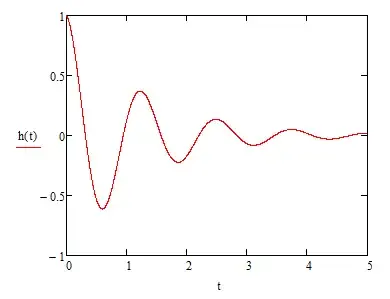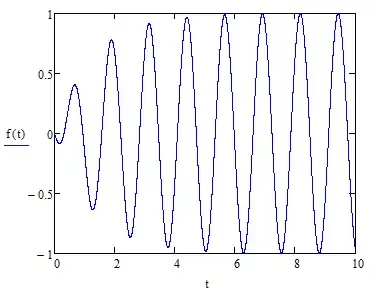I understand the transfer function up to the point of \$ H(\omega) = \lvert H(\omega) \rvert \angle H(\omega) \$ where the magnitude and phase are decoupled into two separate functions, equivalent of saying \$ H(\omega) = { Y_0 \over X_0} \cdot e^{j(\angle y- \angle x \; \text {in radian})} \$. I can understand this in polar equation on the complex plan.
Then all of a sudden the transfer function jumps into \$ H(j\omega) = \lvert H(j\omega) \rvert \angle H(j\omega) \$ swapping every \$ \omega \$ with \$ j\omega \$. I'm lost. I searched here and there but I found no explanation on how and why \$ j \$ axis is transformed into \$ j\omega \$ axis, or why \$ j\omega \$ axis is added to the complex plane as a third axis if it's a different axis.
- Does \$ j\omega \$ axis mean \$ j \$ axis multiplied by a frequency magnitude of \$ \omega \$? If so what does it mean and why an axis has a magnitude? That make no sense to me whatsoever to give magnitude to an axis as axis should only be directional (imagine if someone ask me to graph a line on the x-2y axis instead of a x-y axis)
- Or, is \$ j\omega \$ an entirely different axis from \$ j \$ axis - meaning a number on \$ j\omega \$ axis has no relation to a number on \$ j \$ axis? If that's the case could someone help explain what are their difference and when should I use which?
- Since \$ \omega \$ is the angular velocity, could \$ j \omega \$ represent the rotational axis, a third axis that is orthogonal to \$ j \$ axis and the real axis like a cross product sort of thing?
[EDIT]
Just to clarify my thought process here. If I have 2D plane with two axis, x and y, I can define a value \$ z = ax + by \$, where a is a position on the x-axis and b is a position on the y-axis. We can call the value z on the x,y plane. We are not going to call it x,by or x,\$ \omega y\$ plane.
Same logic goes here where the complex frequency s is a value on \$ \sigma \$ or real axis and on \$ j \$ imaginary axis. So a value of s is \$ s = a\sigma + bj\$, where a and b are positions on the real and imaginary axis. So s is on \$ \sigma,j \$ plane, not \$ \sigma,\omega j \$ plane. What is \$ j \omega \$ axis?


jas mentioned in the answer, some sources write H as a function ofjw. Other than this notation difference, you will notice that the actual expressions are same in all the sources. – AJN Nov 07 '20 at 11:13svariable concept with the concept of phasors where horizontal axis represents cosine and vertical axis the sine (or cosine). Or the concept of Fourier series where the complex coefficient $c_n$ has real part made from coefficient of cosine and imaginary part from coefficient of sine. The concept used here is different. $$\cos(\omega t) = \frac{1}{2} (\exp(j \omega t) + \exp(-j \omega t))$$ and $$\sin(\omega t) = \frac{1}{2j} (\exp(j \omega t) - \exp(-j \omega t))$$ Can you provide sources to the claim "j frequency is sine and a real / non-j frequency ..." – AJN Nov 07 '20 at 12:58jis absent in the notationH(jw). Only reason I can currently think of as to why books use theH(jw)notation is probably to distinguish it from $H(e^{j\omega})$ that we may encounter in discrete time systems. – AJN Nov 07 '20 at 14:30